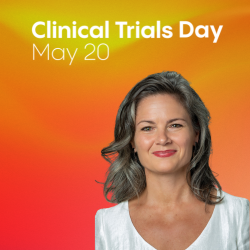With the long-anticipated ignition of the Research to Accelerate Cures and Equity (RACE) for Children Act on Tuesday (August 18) this week, stakeholders in the development of oncology drugs—ranging from patients and their families to clinical research sponsors and practitioners—have new hopes for advancements in more effective therapies for pediatric cancers.
According to Lynne Georgopoulos, RN, MSHS, RAC, and S. Y. Amy Cheung, PhD, coauthors of a column on the RACE for Children Act for the upcoming September issue of Clinical Researcher, the flagship publication of the Association of Clinical Research Professionals, the Act was first incorporated as Title V in the 2017 U.S. Food and Drug Administration (FDA) Reauthorization Act. It builds upon earlier advances made by the Pediatric Research Equity Act and the Best Pharmaceuticals for Children Act, which resulted in more than 800 medicines being labeled for pediatric use, but had limited success with oncology drugs.
The coauthors both work for Certara, where Georgopoulos is vice president for regulatory strategy and Cheung is senior director of integrated drug development, and where the RACE Act has been a subject of ongoing interest. Other companies tied to drug development have been paying attention to and sharing information on the topic, as well, including Premier Research, PRA Health Sciences, Synteract, and Covance; and FDA draft guidance tied to pediatric studies of molecularly targeted oncology drugs is available.
The RACE for Children Act requires the sponsor of an original New Drug Application (NDA) or Biologics License Application (BLA) for an adult cancer drug directed at a molecular target considered relevant to the growth or progression of a pediatric cancer to submit an initial Pediatric Study Plan. The Act applies to NDAs and BLAs for a new active ingredient, which may include biosimilars, filed on or after August 18. It applies even if the adult cancer does not occur in children or the adult indication was granted orphan designation.
Because of the Act, “Now, the more than 1,000 cancer therapies in development for adult cancers that have not reached the end of their Phase II trials will also be studied in children’s cancers,” noted Nancy Goodman, founder and executive director of Kids v Cancer, a nonprofit dedicated to changing the landscape of pediatric research, in her organization’s announcement about the Act going into effect this week. “For kids with cancer, this means that they now have a shot at being treated with the most exciting and promising cancer drugs currently under development. Treatments for children with cancer will not be limited to drugs approved for adult cancers a decade ago or more.”
Further, pediatric oncologists will no longer suffer from the severe lack of access to novel therapies for their pediatric cancer clinical studies, Goodman wrote. “Rather, the challenge pediatric oncologists now face is which therapies to study—a great problem to have,” she added.
Goodman also made note of the fact that the pharmaceutical industry will invest hundreds of millions of dollars into pediatric cancer research to complete RACE studies, which will present new opportunities for researchers to fund their work. The Act is even “causing a cultural shift whereby drug developers now have an expectation that they will bring their companies’ exciting and novel assets to children,” she wrote.
Edited by Gary Cramer



